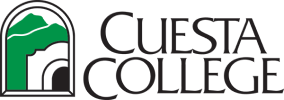
Program Summary
PHYSICS - Associate in Science for Transfer
Students obtaining the Associate in Science in Physics for Transfer degree (AS-T in Physics) will learn the concepts and principles upon which physical knowledge is based, including mechanics, rotational motion, fluids, thermodynamics, waves, electricity and magnetism, relativity, atomic and nuclear physics, and quantum theory. This degree provides students with sufficient understanding of physical concepts, problem solving skills and analytical thought processes to prepare them to transfer into a university level major in Physics.
The Associate Degree for Transfer (AA-T or AS-T) is a special degree offered at California Community Colleges. Students who earn an AA-T or AS-T degree are guaranteed admission to a campus within the California State University (CSU) system in a similar major, although not necessarily to a specific campus. Students who complete an AA-T or AS-T are given priority consideration when applying to a particular program that is similar to the student’s community college major and will be given a special GPA advantage when applying to CSU impacted campuses or majors. Students who are planning to pursue an AA-T or AS-T are strongly advised to meet with a counselor for additional information about this transfer program.
The Associate in Science in Physics for Transfer degree requires:
(1) Completion of 60 semester units that are eligible for transfer to the California State University, including both of the following:
(A) California General Education Transfer Curriculum (Cal-GETC).
(B) A minimum of 18 semester units or 27 quarter units in a major or area of emphasis, as determined by the community college district.
(2) Obtainment of a minimum grade point average of 2.0.
(3) Earn a “C” or better grade in all courses required for the major or area of emphasis. A "P" (Pass) grade is an acceptable grade for courses in the major.